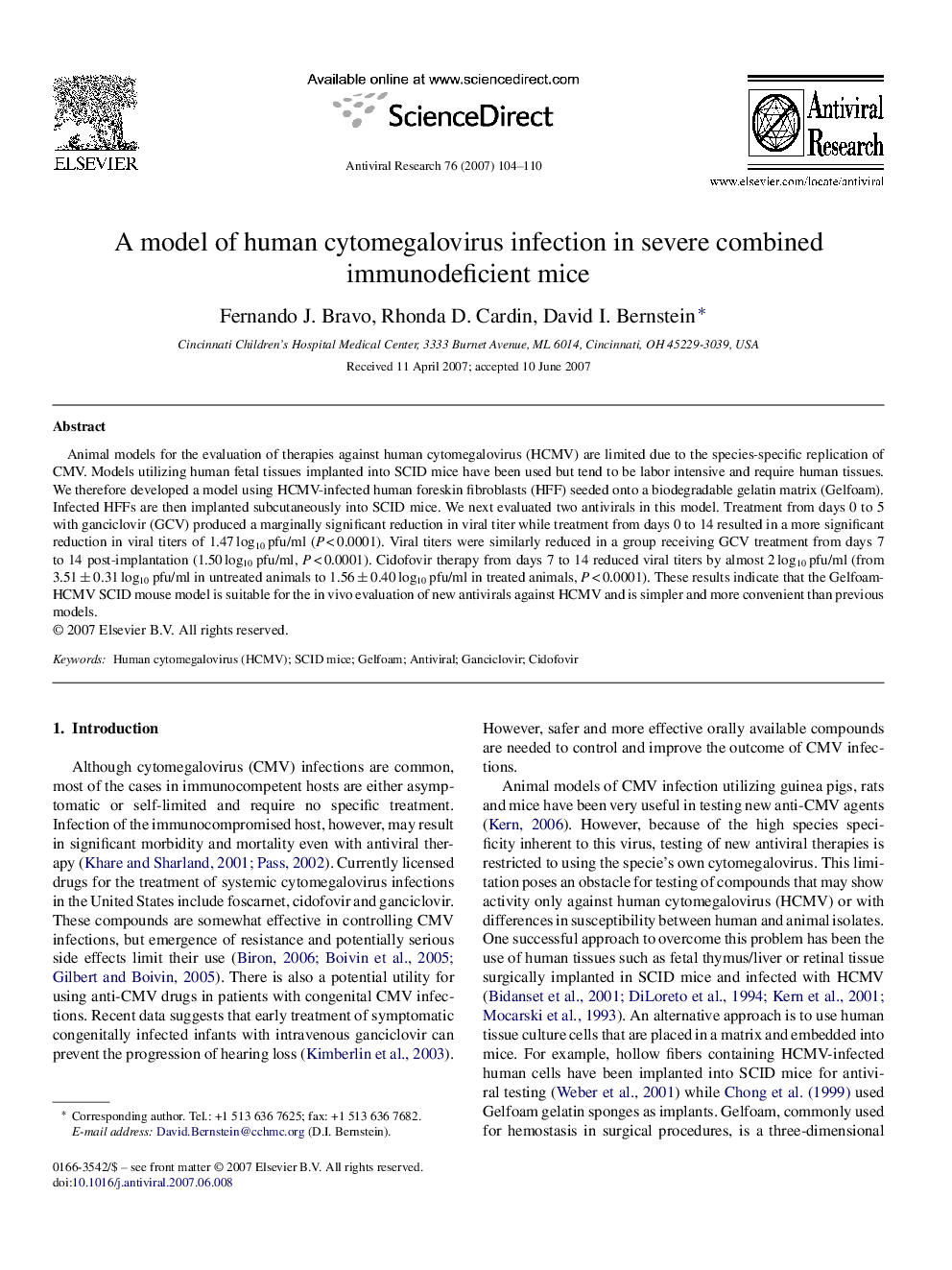| Article ID | Journal | Published Year | Pages | File Type |
|---|---|---|---|---|
| 2511391 | Antiviral Research | 2007 | 7 Pages |
Abstract
Animal models for the evaluation of therapies against human cytomegalovirus (HCMV) are limited due to the species-specific replication of CMV. Models utilizing human fetal tissues implanted into SCID mice have been used but tend to be labor intensive and require human tissues. We therefore developed a model using HCMV-infected human foreskin fibroblasts (HFF) seeded onto a biodegradable gelatin matrix (Gelfoam). Infected HFFs are then implanted subcutaneously into SCID mice. We next evaluated two antivirals in this model. Treatment from days 0 to 5 with ganciclovir (GCV) produced a marginally significant reduction in viral titer while treatment from days 0 to 14 resulted in a more significant reduction in viral titers of 1.47 log10 pfu/ml (P < 0.0001). Viral titers were similarly reduced in a group receiving GCV treatment from days 7 to 14 post-implantation (1.50 log10 pfu/ml, P < 0.0001). Cidofovir therapy from days 7 to 14 reduced viral titers by almost 2 log10 pfu/ml (from 3.51 ± 0.31 log10 pfu/ml in untreated animals to 1.56 ± 0.40 log10 pfu/ml in treated animals, P < 0.0001). These results indicate that the Gelfoam-HCMV SCID mouse model is suitable for the in vivo evaluation of new antivirals against HCMV and is simpler and more convenient than previous models.
Related Topics
Life Sciences
Immunology and Microbiology
Virology
Authors
Fernando J. Bravo, Rhonda D. Cardin, David I. Bernstein,
